We all agree that the cushion and backrest are a crucial part of an end-user's mobility equipment. The cushion and backrest come into direct contact with the user's skin, it is the interface between the person and the mobility base and therefore its selection cannot be taken lightly.
During the seating evaluation, we look for a cushion that suits our customer's needs. We should take into consideration some key factors. Postural alignment: there will be users who, due to their diagnosis and condition, don't need much support to maintain an adequate posture. However, others will require a cushion with pronounced contour and a deeper pelvic loading area (PLA) to maintain lateral and frontal stability. Another feature of a suitable cushion is the ability to incorporate - if required - positioning components to decrease, correct, or stop postural deviations such as pelvic obliquity, posterior/anterior pelvic tilt, or pelvic rotation.
Skin protection is another factor we must consider. For end-users with low risk of skin breakdown, a mildly contoured foam base with a moisture-resistant cover may be enough. Other clients with a lack of sensation in the area, seated in their wheelchairs for several hours, presenting circulatory problems, etc. will likely have a higher risk of skin injuries. In these cases, in addition to the foam base, the users may benefit from a fluid, gel, or air insert to better distribute weight and reduce the pressure on the body prominences.
Comfort is another important consideration. Regardless of the time a user is in his wheelchair, it is imperative that he feels comfortable during that time. A cushion that provides comfort will help with the user's sitting tolerance, which will contribute to how much the user will utilize his mobility equipment.
In active users, a cushion that performs its job well will provide stability and balance to move away from the midline reaching objects, flexing the trunk, and enhancing function in general.
Within the standard seating category, cushions designed to protect the skin and provide positioning (those with higher HCPCS codes) also offer multiple modifications to meet the user's needs. Depending on the cushion, there are modifications that can be made to the foam bases, the inserts, and/or the covers. We could classify the modifications available in the cushions in three major categories:
Modifications Related to Sizing and Fitting
These alterations are intended to meet the exact width, depth, and height measurements required by the user. Among the most common are:
Width or Depth Reduction
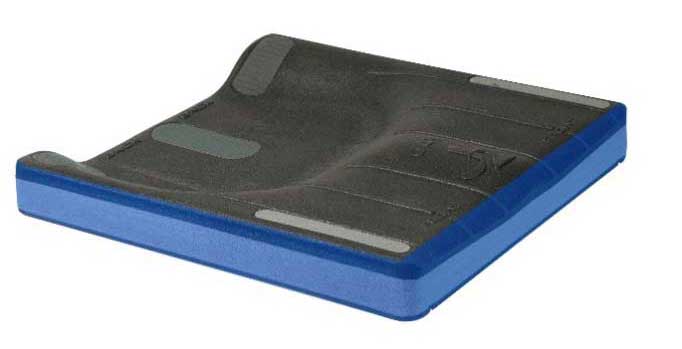
In these cases, foam is removed from the sides or the front of the cushion to reach the necessary measurements, always respecting the size of the PLA so immersion, envelopment, and stability will not be effected.
Height Reduction
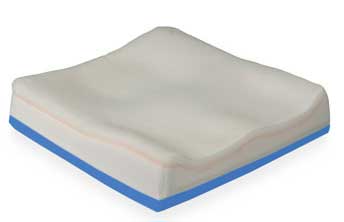
Most of the time, end-users require a specific height to make transfers, to use a desk, or to foot propel, and YES, many times ¾" makes a difference. In many cases, reducing the cushion profile allows the end-user to reach those desired heights. A certain amount of foam is removed from the base of the cushion to decrease its overall height.
Notch for Back Posts
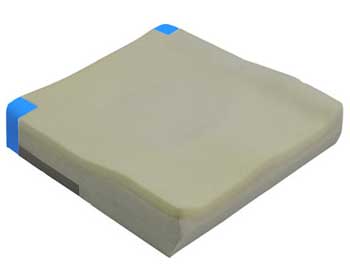
By removing some foam from the back corners, we manage to secure the cushion between the backrest tubes. A good option if the client has constant involuntary movements, transfers frequently, or if the clinician needs to consider growth incorporated for the future.
In all of these modifications, the cover is also altered to fit with the new measure of the foam.
Modifications for Clinical Benefits
The purpose of these alterations is to improve positioning, give extra skin protection, or enhance function. Modifications of this type can be made to the base, fluid insert, or cover. Below are examples of such modifications commonly requested:
Leg Length Cut
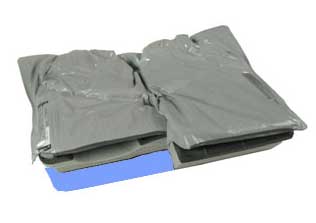
Users with length discrepancies on the femur shouldn't choose between leaving the shorter femur with very little support or increasing the pressure on the popliteal zone in the longer femur. One of the most requested modifications for standard cushions is to decrease the length of the base and the insert (if applicable) on one side to give each leg the adequate support.
Overfill
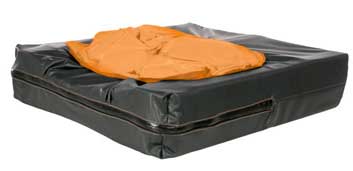
In cushions with fluid inserts, it is possible to increase the volume. The goals for having more fluid in the PLA can be to have a better weight distribution, to reduce pressure in the ischial tuberosities (IT) when the client "sinks" into the PLA or to increase the user's comfort when they feel more fluid is needed to increase sitting tolerance.
Wedge Posterior Slope
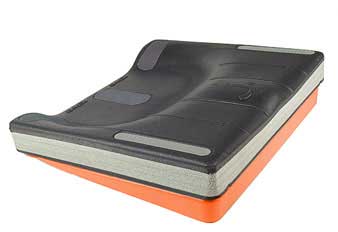
End-users who need to increase postural stability could benefit from a wedge glued underneath the cushion. The front of the wedge is higher, closing the seat-to-back angle and improving the stability. The number of inches added to the front will depend on the client's need.
Aesthetic Modifications
Last but not least are the modifications that can be made to improve the aesthetics or functionality of the cushion. Simple mods can go a long way in improving the self-confidence of our clients.
Colored Side Bands
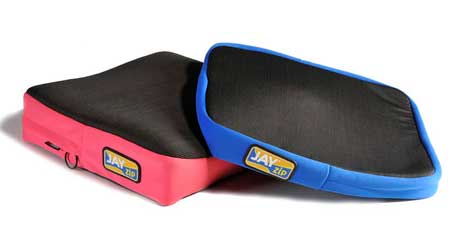
Whether your client wants to match the color of the cushion with the frame or simply add a touch of color.
Embroidery
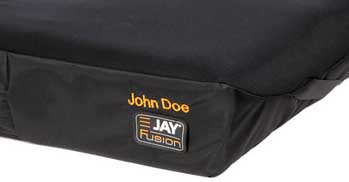
For those who want to personalize their equipment even more. Clinicians could also request the name of their clinic on cushions used for postural evaluations.
Front Zipper Pocket
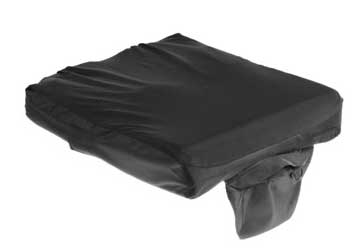
It is possible to sew a small pouch on the front of the cover. It folds back and attaches with Velcro to the underside of the cushion and allows easy access and storage for keys, cell phones, or credit cards.
We have reviewed some of the most common modifications available in standard cushions. Always remember: The best cushion for your client is the one that can be adapted/modified to meet his or her needs. We want to modify the cushion to the user, not the user to the cushion.